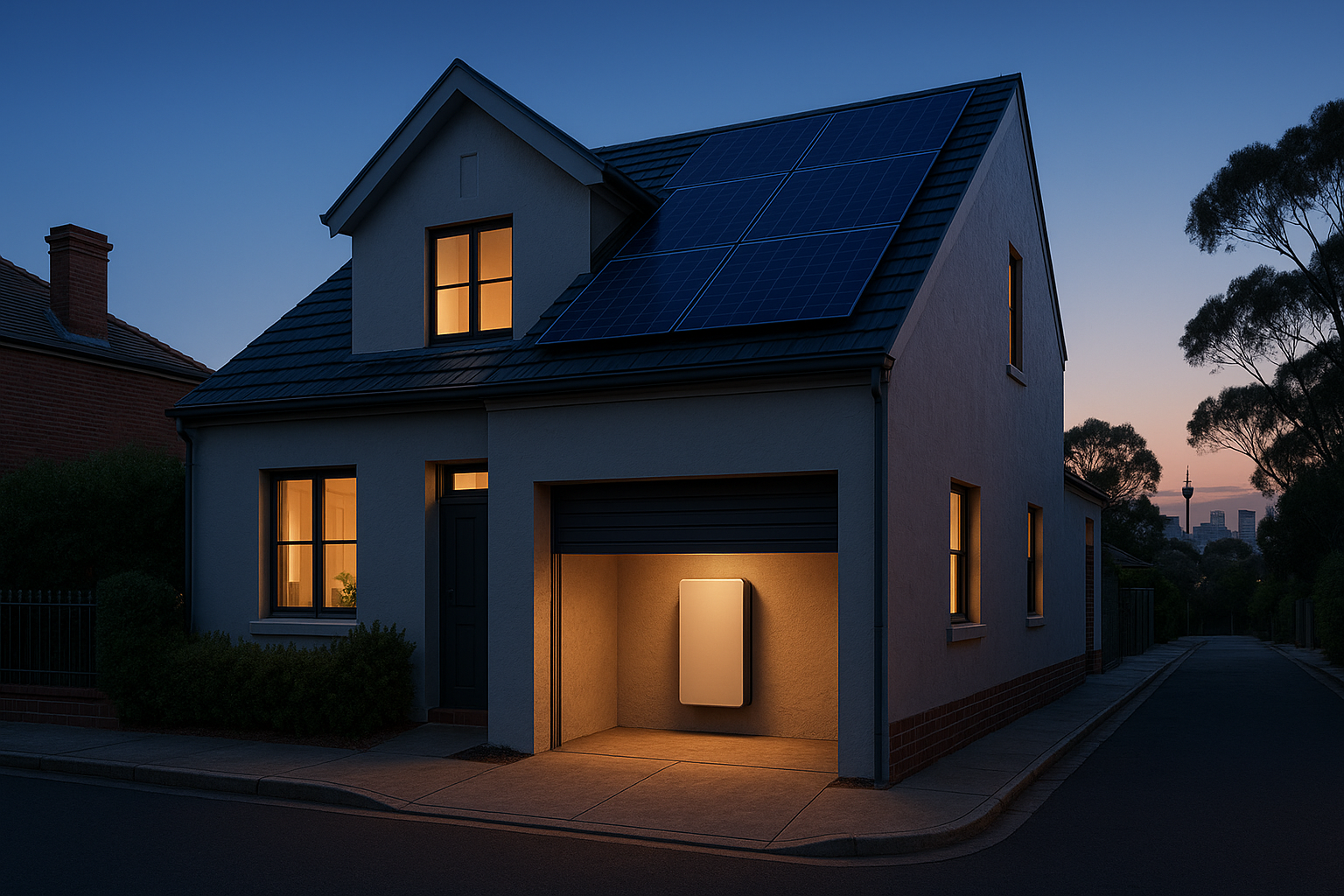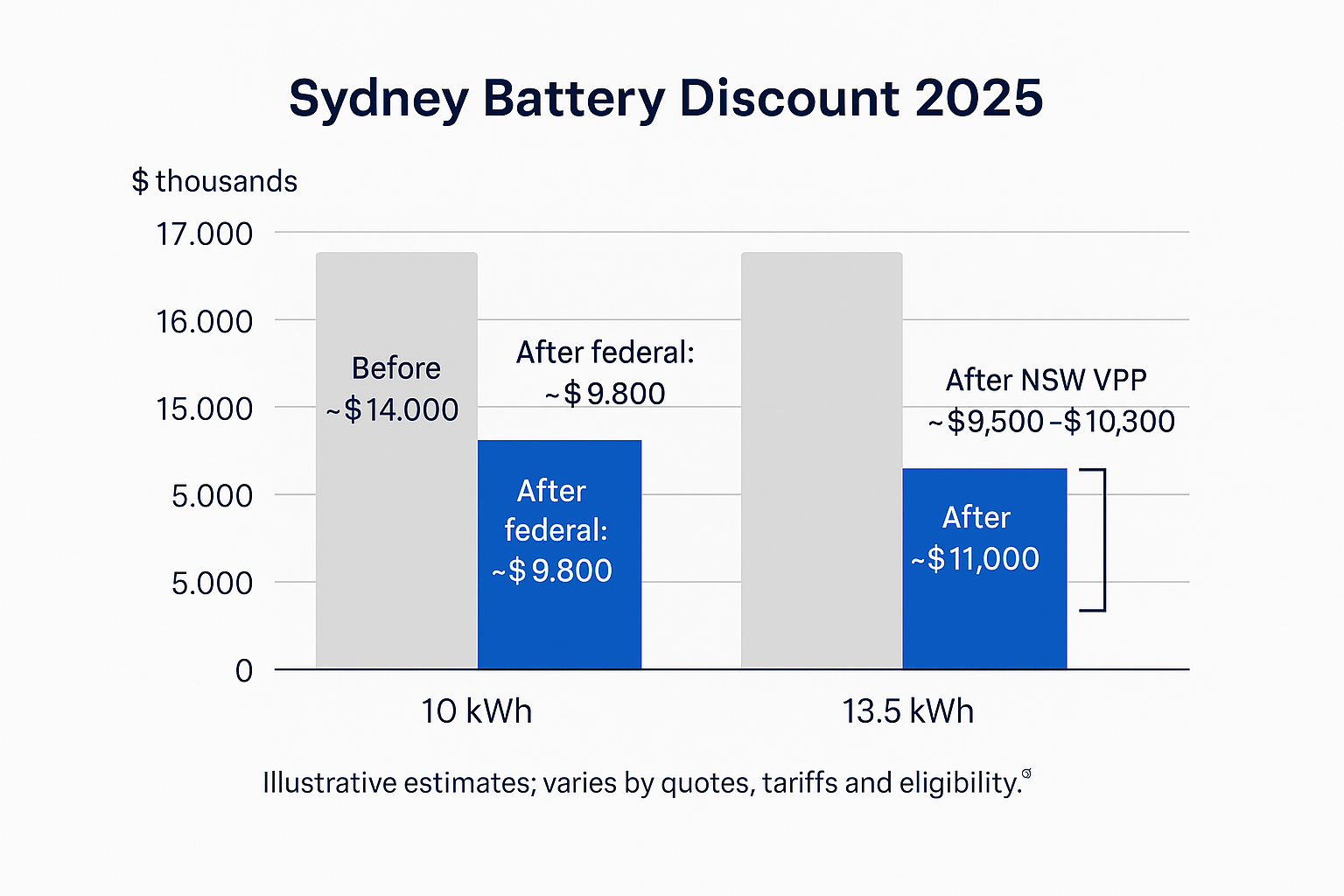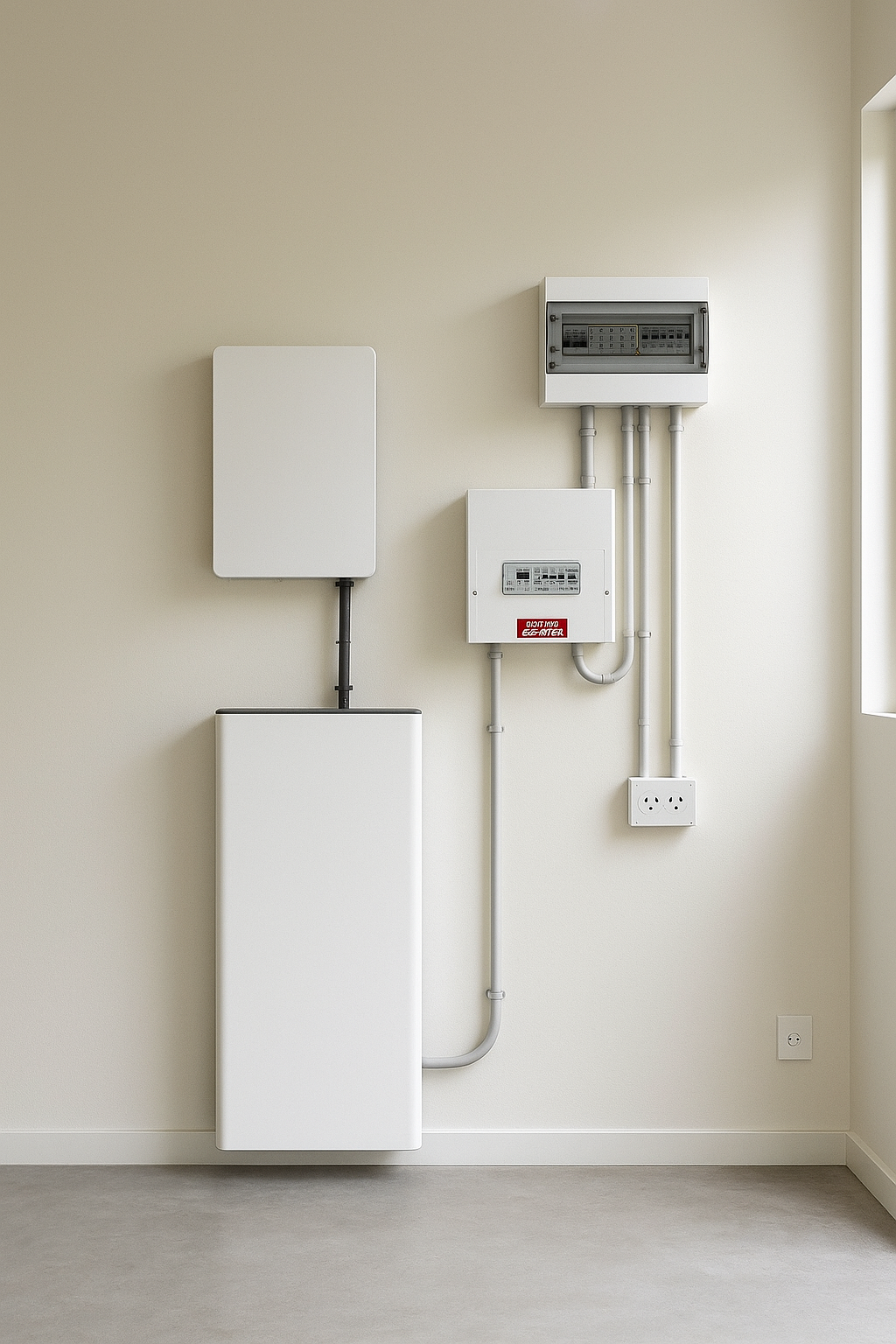Sydney battery rebate 2025 – what you’ll actually pay after discounts
The federal government’s battery rebate 2025 Australia program has finally kicked in and it’s transforming the market. From 1 July 2025, Sydney households can claim an up‑front discount for small‑scale batteries through the national Cheaper Home Batteries program. This scheme, run via the Small‑Scale Renewable Energy Scheme (SRES), slices around 30 percent off the purchase price and can be stacked with the New South Wales (NSW) Virtual Power Plant (VPP) incentive. For locals who want real numbers rather than hype, this guide sets out typical pricing, eligibility and example bill savings using suburbs like Zetland and Randwick.
How the federal discount works
The Cheaper Home Batteries program is designed as an up‑front discount, much like the existing solar STCs. Households, small businesses and community groups that install an eligible battery between 5 kWh and 100 kWh can receive a discount of about 30 percent off the installed price.
The final value depends on the battery’s usable capacity and is delivered by approved installers as a reduction on your invoice. The discount is funded by the Commonwealth purchasing small‑scale technology certificates (STCs), so there are no pass‑through costs to energy retailers or consumers.
Eligibility is broad. Home‑owners, landlords and small businesses can apply provided the battery is paired with an existing or new solar photovoltaic (PV) system.
Systems must be installed by a Solar Accreditation Australia accredited installer and use products on the Clean Energy Council approved list. Batteries over 50 kWh still receive a discount, but STCs are only issued on the first 50 kWh. There is no income test, but each property can only claim the discount once, and the scheme will gradually decline in value each year until 2030.
To access the rebate you don’t need to lodge paperwork yourself. Once you accept a quote, the accredited retailer applies the STC discount on your behalf and reduces the purchase price.
The Clean Energy Regulator encourages consumers to obtain multiple quotes, check warranty terms and confirm that the installer is present during commissioning. Free consumer advice is available through the Solar Consumer Guide on energy.gov.au.
What Sydney households actually pay
|
System size |
Typical installed price (Sydney) |
Federal discount estimate |
NSW VPP incentive range |
Likely net price |
|
10 kWh battery |
~$14,000 installed |
~$4,200 off (~30 %) |
~$500–$1,000 |
~$8,800–$9,500 |
|
13.5 kWh battery |
~$16,000 installed |
~$5,000 off (~30 %) |
~$700–$1,500 |
~$9,500–$10,300 |
Estimates based on mid‑market Sydney prices for 2025. Actual costs vary with site works, switchboard upgrades, inverter pairing and battery brand. Paired systems or hybrid inverters may qualify for extra value through EV & solar battery storage.
The NSW Government has replaced its old battery rebate with a higher Virtual Power Plant (VPP) incentive. According to the NSW Climate and Energy Action website, the incentive has increased and can be combined with the federal discount.
When you connect a battery to a participating VPP you receive an up‑front payment based on the usable capacity of your battery. Larger batteries receive larger incentives; the payment can be delivered in instalments or as a credit off your electricity bill.
The incentive is available once per National Metering Identifier and may require switching electricity retailers. Providers such as AGL, Amber, Discover Energy and others offer different VPP terms.
Example bill savings in Zetland and Randwick
Zetland terrace or apartment (10 kWh): A medium‑sized battery paired with solar allows households to charge during off‑peak periods and use stored power during the evening. After the federal discount and NSW VPP incentive, a 10 kWh battery may cost around $9,000. Assuming an annual consumption of 5,000 kWh and evening peaks between 4 pm and 10 pm, families could save $700–$1,200 per year on electricity bills, with extra credits from a VPP. The ABC reports that households with existing rooftop solar could save up to $1,100 extra a year under the program, so our estimate is conservative. Residents of Zetland often live in terraces or apartments with limited roof space, making compact batteries attractive.
Randwick family home with EV (13.5 kWh): In freestanding homes with higher evening loads and an electric vehicle, a larger battery delivers greater savings. A 13.5 kWh battery reduces reliance on peak‑rate grid power and can charge the EV overnight. After stacking the federal discount and a larger VPP payment, the net cost might be around $9,500–$10,300. With annual consumption closer to 8,000 kWh, potential bill savings rise to $1,300–$2,000 per year. Labor’s modelling suggests new solar‑plus‑battery households could save up to $2,300 a year, especially when optimised for EV charging. Randwick homes often have more roof area, allowing for larger PV arrays and bigger batteries.
Optional participation in a VPP further boosts earnings. The NSW Government notes that VPP members receive an up‑front incentive and ongoing payments for selling stored energy. Households can only claim the NSW incentive once and must choose a provider from a growing list. Savings vary based on the VPP contract, the number of discharge events and wholesale electricity prices.
How to apply
Book a site assessment:
- Contact a reputable installer to assess your roof space, switchboard and load profile. Ensure they are accredited under Solar Accreditation Australia. Obtain multiple quotes and confirm the battery is listed on the Clean Energy Council’s approved product list.
Choose size and brand: Decide on battery capacity based on household consumption, future EV plans and budget. A 10 kWh unit suits small households, while 13.5 kWh is better for larger families or those with electric vehicles.
Confirm eligibility: Make sure your property has an existing or planned solar PV system and that the battery capacity sits between 5 kWh and 100 kWh. The property must not have already claimed the federal discount.
Installer lodges the rebate: Your chosen installer will create and redeem the battery’s STCs, applying the federal discount as an up‑front reduction on your invoice. Keep copies of contracts and warranties for future reference.
Opt into a VPP (optional): After installation, compare offers from VPP providers. Signing up will earn you a one‑off NSW incentive and ongoing credits. Check the contract carefully, as conditions vary by provider.
The process is straightforward. You can apply for the Sydney battery discount through our team. If you’d like expert help pairing a battery with an EV or hybrid inverter, visit our EV & solar battery storage page. Ready to get started? Contact Bright Future Energy to organise your assessment and secure your place in the 2025 battery boom.


